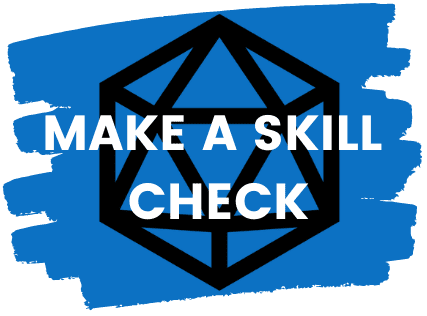The action economy measures how many acts creatures or groups can do in a round of combat. In a 5e round—six in-game seconds—a creature can do: one action, one bonus action, one reaction, one free object interaction (like unsheathing a blade), move up to their speed.
Leonardo Andrade
5e: How to Run Horror Adventures
The horror genre covers a broad spectrum of scenarios. What unites them are the feelings of mounting dread and powerlessness. Though D&D 5e is ultimately about acquiring power and beating the odds, you can still achieve a riveting horror experience through narrative and careful tweaking.
5e Grappling: Build a Luchador Extraordinaire
n 5e, grappling lets you keep an opponent from moving, forcefully move them, or even make them an easier target. You can drag them out of cover, make sure the rogue can Sneak Attack (depending on turn order), keep them Prone to give your allies advantage, and combo with Feats for extra nastiness.
5e Gold: All that Glitters Shouldn’t be Gold
1 gp is roughly 100 USD. Characters can spend money on lifestyle, transportation, toolsets, magic items/services—depending on playstyle—even on training and real estate. Often, adventuring is so lucrative that PCs hoard cool stuff in a way that feels unearned. But it doesn’t have to be so.
5e: How to Make and Run One-shots
One-shots are different from regular D&D sessions. Time constraints force a more linear structure. Increased DM guidance is both necessary and expected. When running one, you need to roll with the punches players throw at you. Be careful not to over prep; one or two pages will do.
5e: How to Run an Evil Campaign
The key to running a great evil campaign is knowing that—at its core—it is still about creating a shared, fun experience. This means teamwork, respect, player agency, and flexible DMing. The campaign must be player-directed for the evil to mean anything unless you’re going for cartoon evil.
5e: Nonlethal Damage and Nonlethal Play
To avoid killing in 5e, one can use magic, social skills, tactics, cunning, and nonlethal knockouts. There’s a rule for this in the Player’s Handbook (pg 198): when reducing someone to 0 hit points (HP) with a melee attack, you can choose to knock them unconscious—stable—instead of outright murder.
5E: Underrated Monsters to Boost Your Sessions
Every time you prep an encounter or storyline, it’s an opportunity to take your players to uncharted territory and engage their sense of wonder—or fear of the unknown. While there’s nothing wrong with using staples, it has an opportunity cost. When done repeatedly, this leads to blandness.
5e: How to Make Engaging Campaigns
D&D is both a game and narrative experience. We don’t play to make numbers go up; we want to be wowed by engaging stories. The game’s mechanics double as a system of emergent storytelling that combines DM intent and player agency. The broad shape and core themes of these stories are the DM’s domain.
5e: How to Homebrew Everything
Unofficial D&D content produced in a hobbyist or semi-professional fashion is broadly called homebrew by the game’s community. A lot of homebrew comes from players’ unmet needs by the official content or creators’ desires to explore the possibilities of D&D as a medium/set of mechanics.










